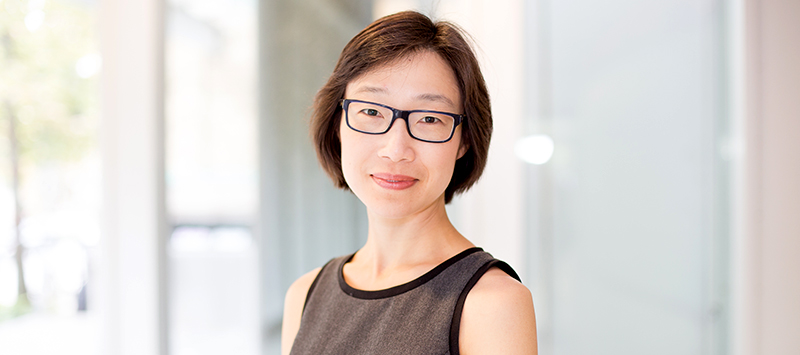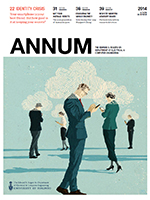December 17, 2014
Our newest faculty member joined the Institute of Biomaterials & Biomedical Engineering (IBBME), with a cross-appointment to ECE, in July 2014. She comes to U of T Engineering from The Hospital for Sick Children where she worked as a scientist in the Research Institute. Marit Mitchell sat down with Professor Cheng to talk about her career, research and striking a balance between science and art.

Q:Welcome! Why did you choose to join ECE and IBBME from SickKids?
A: Prior to coming to the Faculty, I was engaged in research 100 per cent of the time. That’s one thing I’m really passionate about—I love what I do, but even as an undergraduate I always wanted to become a professor. I love teaching—I know, some people find that hard to believe—but I feel it’s an obligation to pass on my knowledge to the next generation and inspire them to have curiosity about things around them, inspire them to pursue science for the love of knowledge. You only get to do that if you’re a professor on campus. You wouldn’t get that opportunity as a scientist in a research institution—and that was my primary motivation.
Q: You made another career move earlier on, to pivot from aerospace to biomed. How did that come about?
A: After I finished my master’s degree, I decided that I didn’t really have a clear vision of what I wanted to do for my PhD, and at that point I needed to give myself some time to explore industry, and to see if that meshed better with my personality than academia. So I spent two years working in industry, developing software interfacing for surveillance for defence aircraft. It was challenging work, but something was missing. I got up in the morning and went to bed at night thinking, ‘I’m not really contributing anything to society.’ My sister [Hai-Ying Cheng, now a professor at University of Toronto Mississauga] was doing her graduate degree at the time in medical biophysics, and she encouraged me to enrol in the same department, but in the physics stream, where all the engineering geeks and physics geeks were! It was the best choice. I could apply my engineering knowledge and apply physics to medical imaging to solve different healthcare problems—I never regret that day.
Q: What are you working on now, and where are you going from here?
A: At the hospital I was working on magnetic resonance imaging technology to look at cancer and tissue regeneration, but within IBBME there’s Michael Sefton, Milica Radisic, and other experts in the field of tissue engineering. My goal is to advance MRI, non-invasive imaging, to enable advances in tissue engineering. So the fact that I’m here makes a lot of sense and gives my research program, and hopefully my colleagues’, a lot of synergy. The electrical engineering is also beneficial, because now I can start to work with graduate students and colleagues on the ECE side to develop hardware—better imaging coils—to look at small samples or animals on a human scanner. It opens up new research avenues for me.
Q: What do you pursue when you’re not thinking about research?
A: I love art. When I was a little girl, and up until graduate school, in my spare time I would just sit and draw. And I love reading. When I read, I don’t read science books. I read history, I read about religion, I read about different cultures. I find that it enriches my mind in a different sphere. I cannot have science 100 per cent of the time. It also feeds the spiritual needs—to have those human aspects in your life is really important. That’s another reason why I like education—educating not just in terms of knowledge, but in terms of the whole person.
 This story appeared in the latest issue of ANNUM: read or download the full magazine.
This story appeared in the latest issue of ANNUM: read or download the full magazine.